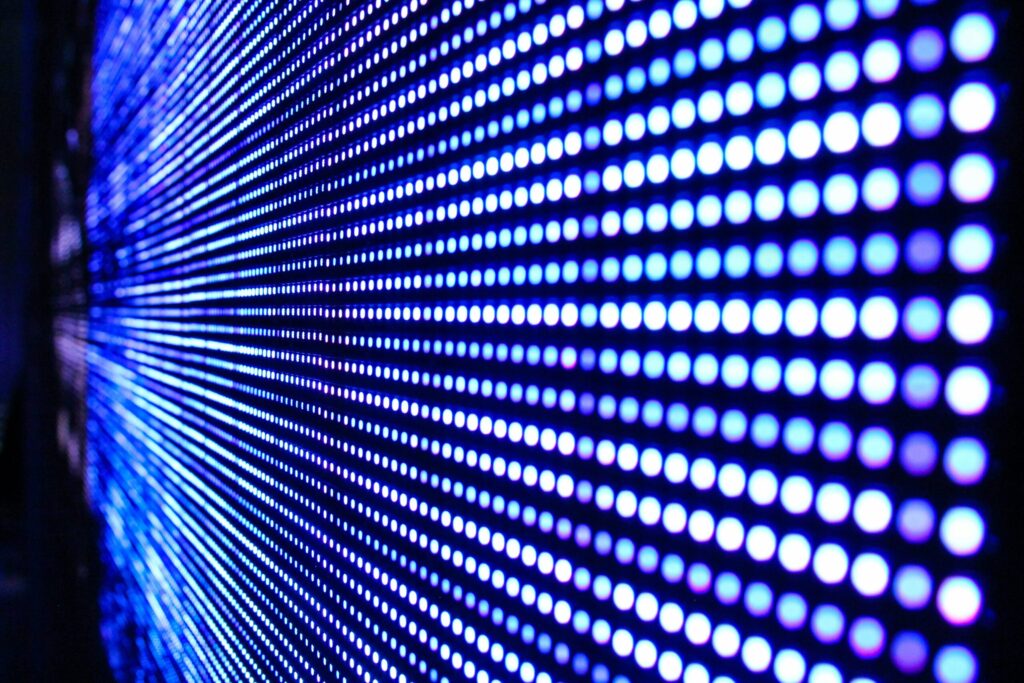Overview and History of LCD Backlighting
A liquid crystal display (LCD) backlight is a light source placed behind a pixel panel to illuminate the pixel panel. LCDs rely on an underlying electrical current to properly display contrast. A backlight allows viewers to see the display more clearly in low-light conditions.
Before backlighting, CRT (Cathode ray tube) technology was used, which does not require a backlight since it is a light source unto itself. A CRT display generates an image by deflecting an electron beam, which requires an evacuated glass envelope. LCDs require less power than CRTs, are smaller and weigh less, are more adjustable than CRTs, and produce less eye strain, making them an obvious choice over the previous standard.
As demand for more advanced display technology grew in the 1990s, CCFLs (Cold Cathode Fluorescent Lamps) were introduced and remained dominant until the mid-2000s. Then came electroluminescent backlights, which were introduced in the early 2000s. LCD backlighting technology continued to evolve, pushing for even more efficient designs with innovative backlighting techniques, giving rise to LED backlighting, which includes Edge-Lit and Direct View configurations.
In defense and aerospace applications, LCD displays are the primary tool for communicating information to teams, providing situational awareness, and facilitating communication and information dissemination. As such, backlighting is critical in ensuring the success and safety of military missions, flight operations, and any other activities reliant on displays for execution.
Types of LCD Backlighting
CCFL backlights were the primary technology used in the 2000s before the widespread adoption of LEDs. A CCFL backlight contains mercury vapor and uses electrodes to generate ultraviolet light, which is then converted into visible light by phosphor coatings. In contrast to later forms of backlighting that would be developed, they were bulky, had low energy efficiency, had a shorter lifespan, and contained some potentially harmful materials. These were most commonly used for early-generation LCD monitors, TVs, and laptops.
Electroluminescent backlights(ELs) were also introduced in the early 2000s before LEDs became mainstream. The EL backlighting model works with electroluminescent materials exposed to an electric current, causing them to release photons and generate light. This improved system architecture was lower in weight, smaller, and more energy efficient than CCFLs, maki most suitable for ultra-portable handheld devices. The transition from electroluminescent panels (ELPs) to LED backlights represents a significant advancement in display illumination, which will drive innovation and shape the modern display industry.
The introduction of LED backlights provided a significant improvement over CCFLs and ELbacklight technologies, providing a much more efficient, lightweight, and flexible design. Most common types of LED-based LCD illumination found in displays today are Edge-lit and Direct-view configurations.
Edge-lit displays are created by placing the light source on a diffuser, which is put behind the LCD to create light dispersion. This design gained prominence during the late 2000s and early 2010s, offering thinner models, improved energy efficiency, superior brightness control, and a lower environmental impact. Edge-lit displays were (and still are) used in applications where a sleeker and more energy-efficient design is essential.
Direct-view backlighting emerged in the 2010s, presenting yet another advancement in backlighting technology. Direct-View backlights are created with arrays of LEDs mounted directly on a printed circuit board (PCB). Direct-View backlights have superior contrast and black levels compared to Edge-Lit backlights, as well as better control over dimming. The drawbacks of adopting this newer technology were that the cost was higher than older designs and the size compared to Edge-Lit, though they were still much thinner than CCFL based displays.
The newest technology in backlighting is mini-LED and micro-LED backlights. These technologies use a larger number of very small LEDs. They offer several benefits, such as enhanced local dimming, contrast performance, and exceptional brightness, contrast, and color display. However, the manufacturing process for these technologies is still complex and expensive, so they have yet to be widely adopted.
LCD Backlighting Technologies for Aerospace & Defense
The optimization of NVIS compatibility has been a critical aspect in the advancement of backlighting technologies over the years, improving operational effectiveness and personnel safety. In order to maintain optimal situational awareness while using night vision equipment effectively, electronic displays, instrumentation, and lighting systems must be NVIS-compatible. NVIS backlighting technologies have a variety of military and defense applications, including inside aircraft and ground vehicles, as well as in ruggedized, portable displays. For these applications, backlighting technologies must be durable, operate over a wide temperature range, and comply with performance requirements such as high brightness and contrast, sunlight readability, and power efficiency.
Cevians continues to set the standard as the industry leader in NVIS backlighting solutions tailored for aerospace and defense display applications. Leveraging our decades of expertise, we specialize in designing and integrating custom backlighting systems that meet the standards of the cockpit and military environments.
Our NVIS LED backlight systems are engineered to deliver optimal performance and reliability while adhering to stringent optical and environmental requirements. Our solutions are tailored to excel in the most demanding operational conditions, from withstanding extreme temperatures and high vibration to ensuring compatibility with MIL-STD-3009. With Cevians, our partners can trust in our commitment to delivering cutting-edge technology that enhances situational awareness, facilitates mission success, and surpasses expectations in any application.

